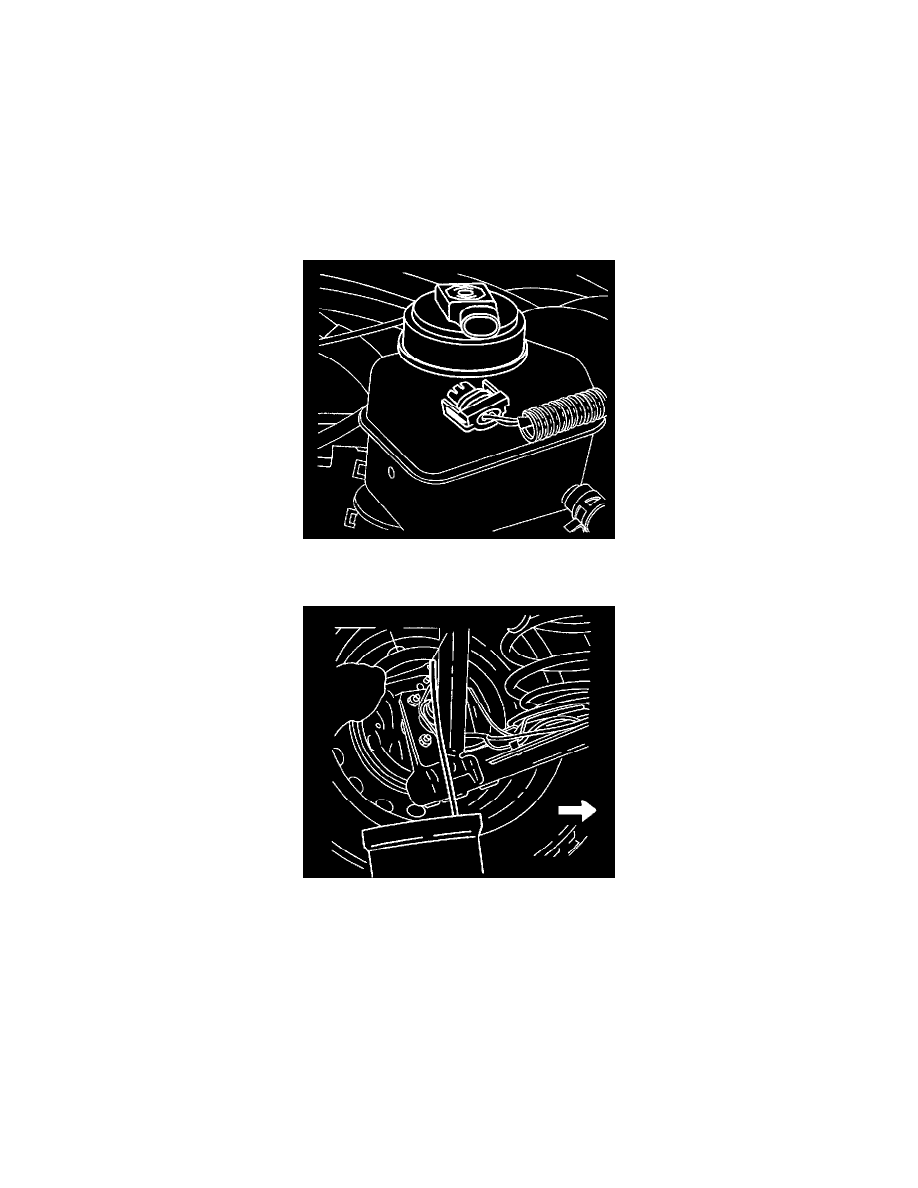Nubira SE Sedan L4-2.0L DOHC D-TEC MFI (2001)

Brake Bleeding: Service and Repair
BLEEDING SYSTEM
Replacement modulators are shipped already filled and bled. In normal procedures requiring removal of the modulator, such as to replace the EBCM,
air will not enter the modulator, and normal bleeding will be all that is needed.
If air enters the hydraulic modulator, or if an unfilled modulator is installed, use the brake bleeding program in the scan tool to bleed the modulator.
Manual bleeding of the hydraulic modulator is not possible.
PRESSURE BLEEDING THE BRAKES
Notice: Pressure bleeding equipment must be of the diaphragm type. It must have a rubber diaphragm between the air supply and the brake fluid to
prevent air, moisture, oil, and other contaminants from entering the hydraulic system. Contamination could lead to deterioration of the braking
components and loss of braking action.
1. Disconnect the master cylinder electrical connector.
2. Remove the master cylinder reservoir cap.
3. Connect the bleeder with the adapter to the master cylinder reservoir.
4. For vehicles with the antilock braking system (ABS), locate and remove the hydraulic modulator bleeder valves.
5. Charge the bleeder ball to 140 to 172 kPa (20 to 25 psi).
6. Connect the line to the adapter. Open the line valve.
7. Raise and suitably support the vehicle.
Important: The bleeding sequence is as follows: right rear, left front, left rear and right front.
8. Attach the bleeder hose to the bleeder valve. Submerge the opposite end of the hose in a clean container partially filled with brake fluid.
9. Open the bleeder valve one-half to three-fourths turn and allow the fluid to flow until no air is seen in the fluid.
